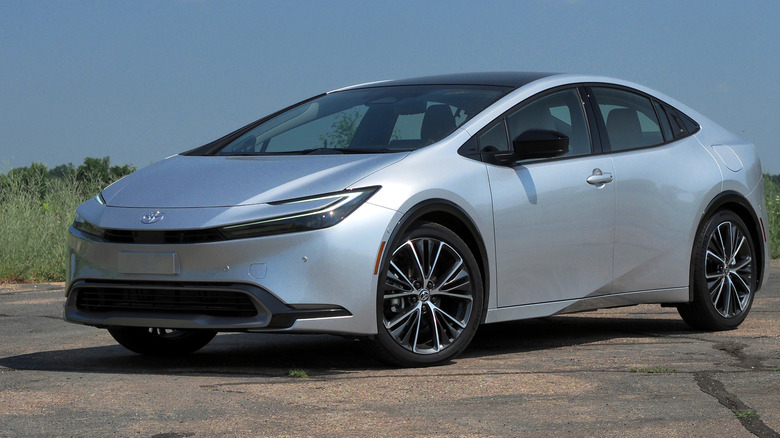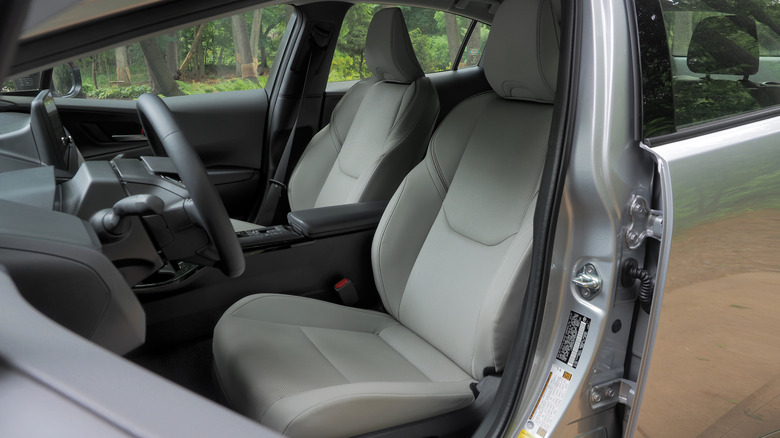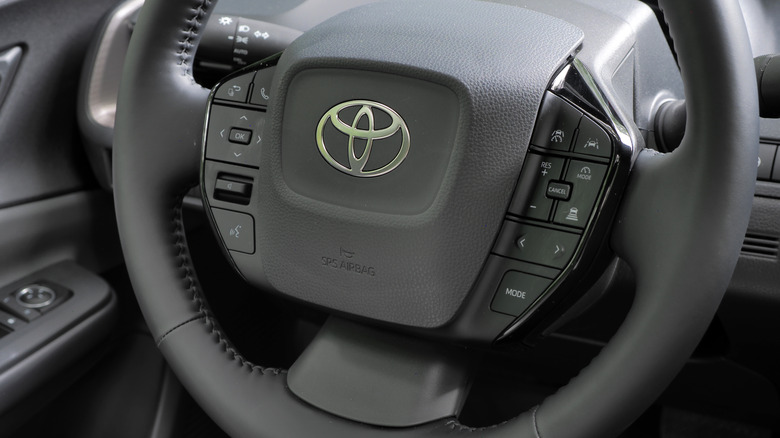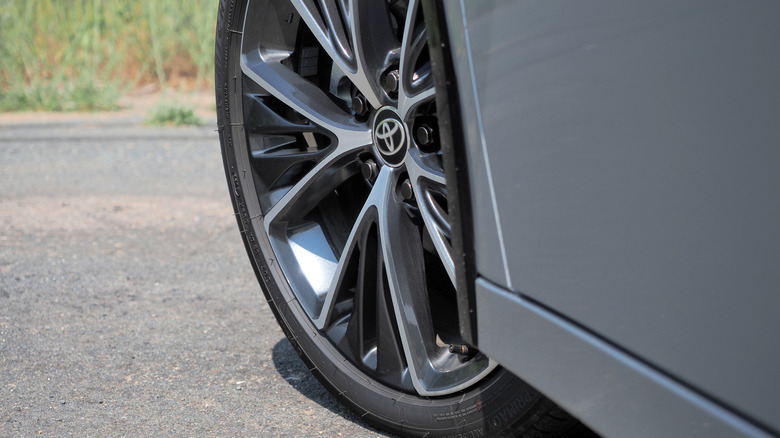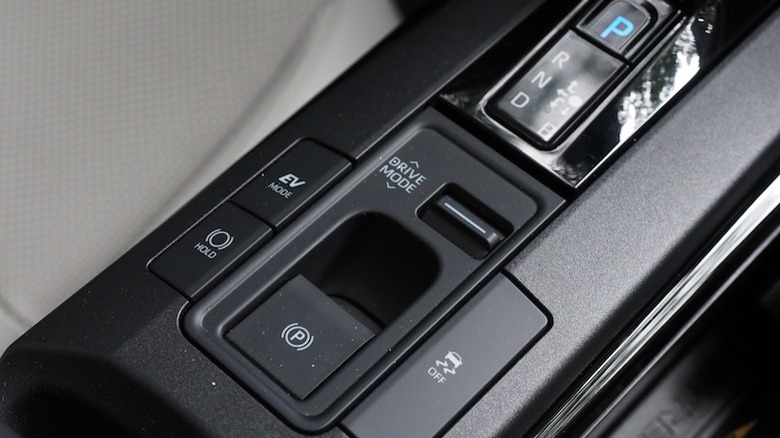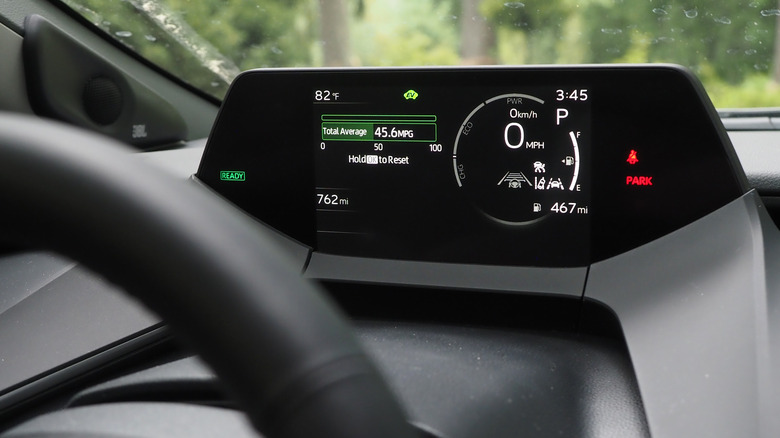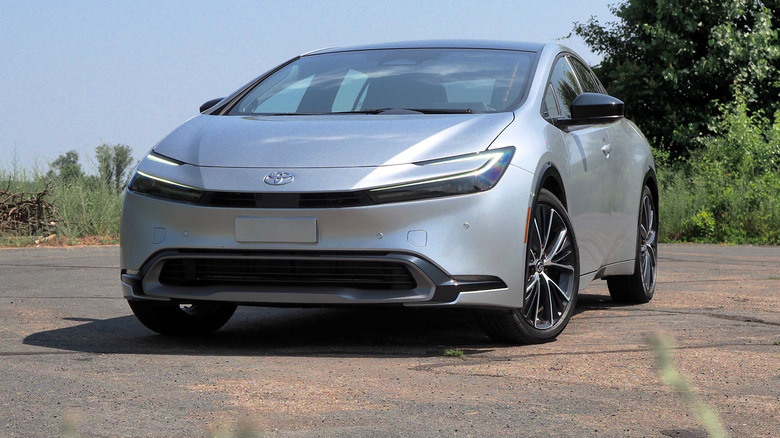2023 Toyota Prius Review: Hybrid Head-Turner
- Genuinely appealing styling
- Aggressive pricing
- Great fuel economy without effort
- More enthusiastic to drive than old car
- Dashboard is button mayhem
- Unlovely drivetrain soundtrack
- Less trunk space than before
It's glow-up time for the Toyota Prius, and the hybrid that propelled electrification into the mainstream has seen the sort of "ugly duckling to swan" transformation that teenagers dream of. Equally important, though, Toyota gave its fuel-sipping five-seater a makeover without diluting what established its appeal in the first place. Gas savings with minimal effort.
Owning a Prius was once a badge of honor among the ecologically minded. Yes, Toyota's car could be ungainly, but its mild hybrid powertrain benefited from the automaker's relentless chasing of cost efficiency. A Prius was affordable to buy and affordable to run; no surprise, then, that it came to epitomize both those who see their car as an appliance and the flourishing UberX transportation revolution.
Neither of those things has ever been described as "sexy," however, so imagine the genuine shock when Toyota pulled back the covers on the fifth-generation Prius in late 2022. Visually distinctive for all the right reasons, for once, the 2023 Prius wowed us first with its style and then with its pricing. Kicking off at $27,450 (plus $1,095 destination) for the LE trim, even the $34,465 (plus destination) flagship Limited trim you see here still comes in well under the average paid for a new car in the U.S. these days.
Wait, this is a Prius?
Those who have long defended the Prius could be forgiven for feeling a little frustration with Toyota. Who knew, after all, that the automaker was capable of making its earnest hybrid look quite so seductive. It's a dramatic upending of what has arguably been the Prius' most consistent talent: inspiring widespread criticism for its questionable appearance.
At best bland, and at worst outright ugly, the Prius has always been shaped by aerodynamics. Toyota's commitment to the bit — refusing to compromise and put aesthetics in pole position — seemed admirable, if controversial. The 2023 Prius, though, feels like the butterfly none of us guessed was gestating in a decade of lumpen hybrids.
The front is shark-like and purposeful; its profile a dramatic wedge that manages to suit bold and subdued colors alike. At the rear, a harmonious combination of arching LED lights and contrast trim frame a badge worth being proud of now, not sheepish about. Everywhere you look there are hints of Prius style of old, only here they make so much more design sense.
Hatchbacks are still the practical pick
The outgoing Prius did have practicality in its favor, and I did wonder if this sleeker update would sacrifice that in the name of style. Overall passenger volume is down, slightly, but — contrary to what you might expect — headroom in both the front and back has actually increased. My 68-inch tall frame had a couple of inches to spare from the roof liner in the rear seats.
Trunk space has shrunk, though. With the rear seats up, it's 23.8 cubic feet in the Prius LE, or 20.3 cu-ft in the XLE and Limited grades. That's a not-insignificant dip, compared to the 27.4 cu-ft of the outgoing car.
Nonetheless, it's still more trunk space than you get in a larger Toyota Camry (15.1 cu-ft), and the 2023 Corolla Cross Hybrid — despite officially being a crossover — only manages 21.5 cu-ft. The Prius' hatchback rear helps with loading and unloading, too.
A new (and sometimes noisy) drivetrain
Motivating things is Toyota's fifth generation hybrid powertrain, here combining a 2.0-liter four-cylinder gas engine, two motor generators, and a continuously variable transmission. A compact lithium-ion battery stores power generated either from the gas engine's activity or from regenerative braking; the Prius Prime's optional solar roof isn't available on the regular hybrid.
Front-wheel drive is standard, with all-wheel drive a $1,400 option that's offered on all three grades. The former packs 194 horsepower; the latter nudges that up to 196 horsepower, adding a dedicated rear electric motor to join the one driving the front axle.
There's still that disconcerting sense that what's going on under the hood isn't entirely connected to how you're driving. Plant your right foot, and sometimes you'll get a whoosh of near-silent torque as the electric motors shove you forward. Other times the gas engine will rouse itself, its tone loud and unlovely; it's a toss-up as to whether it'll then cut out again as you lift off the accelerator, or keep on whining.
Perkier than the prior Prius
Soundtrack aside, there's a whole lot to like about the new Prius on the road. Toyota offers three drive modes — Normal, Eco, and Sport — which each adjust throttle response and how profligate the hybrid is at spending battery power on speed. An EV mode allows for zero-emission driving for very short, low-speed distances. If you want true electric-only driving, though, you'll want to cough up the extra for the plug-in hybrid Prius Prime.
Even without that, the 2023 Prius is spritely and pleasant to drive. Toyota clearly knows its sauce when it comes to zipping away from a standing start, and around town there's all of the perkiness that we've come to expect from electrified vehicles. A claimed 7.2 second 0-60 mph time (or 7.0 seconds for the all-wheel drive version) means it's markedly speedier than its predecessor, too.
No, you're not going to hit the drag strip in your Prius, but you're not going to be embarrassed on the highway either. Well, as long as you haven't switched to Eco mode, which is a real joy-killer.
As for slowing, Toyota's blend of upgraded physical brakes and regenerative braking — which taps both electric motors — is smooth and compliant. It's easy to modulate speed like a regular, non-hybrid car, or tug the stubby little transmission shifter back again into "B" mode, and see the regen levels get a little more aggressive. There's no one-pedal driving option, mind.
Somebody told Toyota switchgear was fashionable again
The Prius' dashboard has been almost as controversial in its stylings as the exterior, and here the impact of the all-electric bZ4X crossover is clearly apparent. Some of Toyota's decisions I can very much get behind: the automaker's newest infotainment system is a vast improvement, looking great and proving easy to use. Others, like the 7-inch driver display that demands a relatively low-slung steering wheel position, take a little getting used to.
Then there are the genuine head-scratchers. Toyota clearly heard the calls elsewhere in the industry for more dedicated physical controls and decided to go whole-hog there. Any surface with space for at least one or two buttons is so co-opted, to almost comical levels. The fact that they're basically all the same shape, with minimal justification for where they're located or how often you might want to press them, leads to Space Shuttle cockpit levels of initial confusion.
That determination to squeeze in as much of Toyota's spare switchgear as possible leaves some controls feeling uncomfortably small. The Prius' drive mode switch, for example, is a tiny little toggle nudged in just behind the transmission shifter.
Green without effort
The Prius' main party piece, of course, is fuel economy. According to Environmental Protection Agency (EPA) estimates, the average fuel consumption in the U.S. — across all passenger vehicle types — was around 26 mpg in 2022. Depending on trim, in contrast, the 2023 Prius is rated for up to 57 mpg on the combined cycle, or more than double the overall average. Even if you drill down to cars alone, leaving out SUVs and trucks, the 2022 estimated average was still under 34 mpg.
Trim does make a significant difference in Toyota's EPA numbers, mind. The Prius Limited shown here, for example, is rated at 52 mpg across the board for city, highway, and combined driving. Opt for the all-wheel drive version, and that dips to 49 mpg in the city, 50 mpg on the highway, and 49 mpg combined.
Official economy ratings are notoriously best-case-scenario affairs. Nonetheless, even without giving much thought to fuel consumption, the new Prius is capable of impressive results. My own, regular driving — switching mainly between Normal and Sport modes — clocked in at just shy of 46 mpg. Hitting Toyota's actual numbers wouldn't have taken much effort.
2023 Toyota Prius Verdict
There's a reasonable argument to be made that all new vehicles should be, at the very least, hybrids. While they may not all work quite the same way as the Prius does, the ease of saving gas without demanding any real changes to how you treat driving — no plugging in required — makes for a temptingly low barrier to entry.
The 2023 Prius' specific allure, then, is in how it wraps that green convenience with a genuinely appealing design. This is a hybrid that turns heads; heck, I found myself craning around to look at one as it drove past me, and I was already in a Prius myself.
That it starts from under $28k (plus destination) feels like a four-wheel treat, then, and even this $35k Limited spec car is aggressively priced for what you get. Those with more than a passing interest in EVs — and with space to park and charge — will undoubtedly find even more reward in the Prius Prime and its plug-in hybrid drivetrain, yes. All the same, there's a lot to be said for a stylish and practical car that sips gas and doesn't break the bank.
